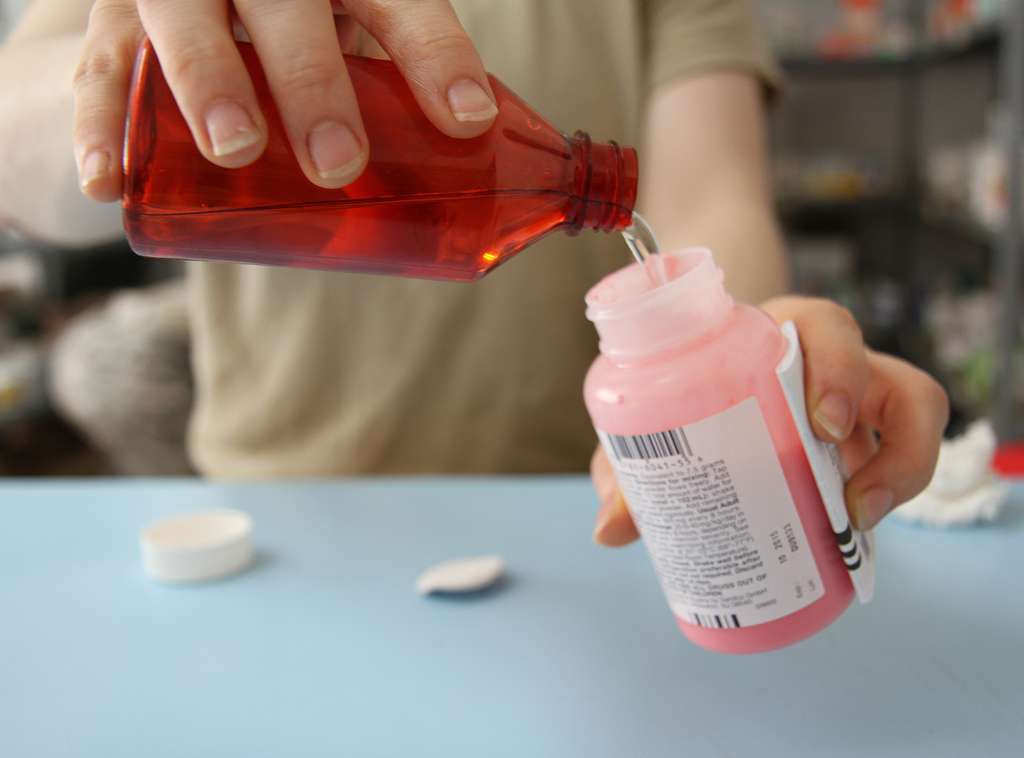Xipamide
- I. Introduction
- II. What is Xipamide?
- III. Uses of Xipamide
- IV. Off-Label Uses
- V. How Xipamide Works
- VI. Dosage and Administration
- VII. Composition
- VIII. Common Side Effects
- IX. Interactions
- X. Warnings
- XI. Contraindications
- XII. Careful Administration
- XIII. Important Precautions
- XIV. Administration to Specific Populations
- XV. Overdosage
- XVI. Storage
- XVII. Handling Precautions
I. Introduction
Brief Overview of Xipamide
Xipamide is a pharmaceutical diuretic with widespread application in the medical field for treating various health conditions. It helps the kidneys eliminate water and salts, playing a role in managing hypertension and edema.
Importance in Medical Treatment
Diuretics such as Xipamide play a role in treating cardiovascular conditions. They help alleviate the burden on the system, leading to improved patient outcomes.
Scope of the Article
This detailed article provides an understanding of Xipamide covering its mechanism of action, how it is administered and the potential side effects to consider, among other essential aspects.
II. What is Xipamide?
Chemical Structure
Xipamide is composed of a sulfamoylbenzamide structure, which is crucial in its pharmacological effectiveness.
Classification within Medication Types
Xipamide falls into the category of thiazide diuretics much like hydrochlorothiazide and indapamide. However, it does have its unique pharmacokinetic properties.
III. Uses of Xipamide
Treatment of Hypertension
Xipamide is a diuretic medication that is used to treat high blood pressure. It is effective in reducing both systolic and diastolic blood pressure levels 1. Xipamide is often used as an initial medication in treating high blood pressure 2.
References:
Management of Edema
Xipamide is a sulfonamide diuretic drug that is used to treat edema, a condition where there is a buildup of fluid in the body 12. It works by reducing sodium reabsorption in the distal convoluted tubule of the kidneys, which increases the osmolarity in the lumen and causes less water to be reabsorbed by the collecting ducts. This leads to increased urinary output and helps reduce fluid retention 1.
References:
Congestive Heart Failure
Xipamide is a sulfonamide diuretic drug used to treat edema, where fluid is buildup in the body. It works by reducing sodium reabsorption in the distal convoluted tubule of the kidneys, which increases the osmolarity in the lumen and causes less water to be reabsorbed by the collecting ducts. This leads to increased urinary output and helps reduce fluid retention.
However, it is known that Xipamide can be used in combination with other antihypertensive drugs, such as ACE inhibitors and beta blockers, to help lower blood pressure levels.
References:
: Wikipedia : MedIndia
IV. Off-Label Uses
Treatment of Diabetes Insipidus
Xipamide is a medication that can be used to treat diabetes insipidus, a rare condition that causes frequent urination and excessive thirst 1. However, it is not the first-line treatment for this condition. Instead, desmopressin is the preferred medication for treating diabetes insipidus 2.
Here are the references for the information provided:
1: Drugs.com 2: Mayo Clinic
Glaucoma Management
Xipamide is a medication that can be used to treat diabetes insipidus, a rare condition that causes frequent urination and excessive thirst 1. Although it is not the first-line treatment for glaucoma, it has been used to help reduce high intraocular pressure which is often seen in cases of glaucoma 2.
Here are the references for the information provided:
Hypercalcemia Treatment
Xipamide is a medication that can be used to help lower the levels of calcium in the blood in cases of hypercalcemia, where high calcium levels can lead to complications 1.
References:
V. How Xipamide Works
Mechanism of Action
Xipamide works by blocking the sodium chloride symporter in the convoluted tubule of the kidney nephron. This function reduces the reabsorption of sodium and chloride resulting in increased urine production.
Pharmacokinetics
Absorption; The body quickly takes it up after being ingested. Distribution; It spreads throughout tissues in the body with a particular preference for the kidneys.
Pharmacodynamics
The effectiveness of the medication varies based on the dosage. It is important to adjust it for the best therapeutic results carefully. How long the drug remains active depends on factors such, as dosage and individual patient characteristics.
VI. Dosage and Administration
Standard Dosages
For the treatment of hypertension, the recommended daily dosage usually falls within the range of 10 to 40 mg. In the case of edema, dosages may. Typically range from 20 to 80 mg.

Route of Administration
The frequently used method of taking medicine is by swallowing it in the form of tablets or capsules.
Dosage Adjustments
Renal or liver problems might require adjusting the dosage as drug interactions and natural changes are associated with aging.
VII. Composition
Active Ingredients
Xipamides diuretic effects are attributed to the component sulfamoylbenzamide.
Inactive Ingredients
Formulations often include substances such as magnesium stearate and lactose to assist in the process.
Formulations Available
Typically these medications are in the form of tablets, although they can sometimes be found as intravenous formulations, in specific medical situations.
VIII. Common Side Effects
Mild Side Effects
Nausea: You might sometimes experience a stomach. Dizziness; There could be lightheaded moments, especially when standing up.
Severe Side Effects
Allergic reactions can pose a risk leading to skin rashes, hives, and potentially life-threatening anaphylactic reactions. It's essential to monitor for imbalances such as hyperkalemia or hypokalemia that may occur and require close monitoring.
IX. Interactions
Drug-Drug Interactions
The way Xipamide interacts with medications can change how effective they are, so it's essential to monitor and adjust as needed closely.
With Antihypertensive Drugs
Synergistic or Conflicting Effects: The hypotensive effects may be. Enhanced or reduced when combined with other medications used to lower blood pressure. Possibility of Blood Pressure: It is highly recommended to exercise caution to prevent sudden and significant drops in blood pressure.
With Diuretics
Using diuretics alongside this medication may increase the effectiveness of diuresis, which could lead to a higher risk of electrolyte imbalances, like low potassium levels (hypokalemia) or low sodium levels (hyponatremia).
Food-Drug Interactions
While Xipamide is generally not affected by interactions with food, it's worth noting that consuming high-sodium diets may reduce its effectiveness in treating hypertension.
Alcohol Interaction
Drinking alcohol while taking Xipamide can worsen the hypotensive effects, increasing the chances of experiencing dizziness or even fainting.
X. Warnings
Black Box Warning
Xipamide does not come with a box warning, but it is still essential to use it responsibly and, under the guidance of medical professionals.
Caution in Renal Impairment
Renal dysfunction can impact how Xipamide is processed in the body. It is necessary to adjust the dosage and regularly monitor function.
Caution in Hepatic Impairment
In individuals with liver impairment, the breakdown and processing of Xipamide may be reduced, requiring an adjusted dosage schedule.
XI. Contraindications
Absolute Contraindications
Anuria refers to the condition where there is a lack of urine production. Severe hypotension is not recommended because it can further lower blood pressure and pose a risk.
Relative Contraindications
Gout, diabetes, and a previous occurrence of pancreatitis may be considered factors that need consideration before administration as they may pose some risks.
XII. Careful Administration
Monitoring Parameters
Monitoring blood pressure periodically is necessary to determine the effectiveness of the treatment. It is also essential to keep an eye on the levels of potassium, sodium, and calcium to detect any deviations.
When to Seek Medical Attention
If someone experiences allergic reactions significant low blood pressure or shows indications of severe electrolyte imbalances, it is essential to seek immediate medical advice.
XIII. Important Precautions
Precautions in Renal Impairment
Reduced kidney function could result in the build-up of Xipamide, so it may be necessary to decrease the dosage and regularly monitor the process.
Precautions in Hepatic Impairment
For individuals with liver problems, it is essential to be careful with medication dosage adjustments due to the risk of increased drug buildup in the body. Therefore it becomes crucial to monitor and adjust doses accordingly.
Drug Interactions Precautions
It is recommended to monitor the use of Xipamide in combination with medications that can affect electrolyte levels, renal function, or blood pressure.
XIV. Administration to Specific Populations
Administration to Elderly
Older individuals may have increased sensitivity, to Xipamide. It is essential to carefully choose the dosage and closely monitor its effects.
Administration to Pregnant Women
Xipamide is classified as a Category C medication during pregnancy, which means its safety is uncertain. Typically it is avoided unless the potential benefits significantly outweigh the risks.
Administration to Nursing Mothers
Because there isn't solid evidence, it's generally recommended that breastfeeding mothers should avoid using Xipamide to ensure the safety of their baby.
Administration to Children
There is no data available to support the use of Xipamide in children. If you are considering it, please consult healthcare to determine the appropriate dosage.
XV. Overdosage
Symptoms of Overdose
- Extreme hypotension
- Electrolyte imbalances
- Acute renal failure
Management and Treatment
Managing an overdose typically involves treating symptoms providing fluids, and taking steps to restore the balance of electrolytes in the body.
Antidotes
There is currently no known antidote for an overdose of Xipamide. However, taking measures such, as administering activated charcoal can help reduce the absorption of the drug.
XVI. Storage
Optimal Storage Conditions
Keep Xipamide stored at room temperature from direct light and moisture to ensure the effectiveness of the medication.
Stability and Shelf Life
The medication packaging usually specifies how long the drug retains its effectiveness.
Disposal Guidelines
Please follow your pharmaceutical disposal regulations when disposing of expired or unused Xipamide. This will help protect the environment from any contamination.
XVII. Handling Precautions
Proper Handling and Dispensing
Pharmacy experts must follow procedures when dispensing medication to prevent contamination.











